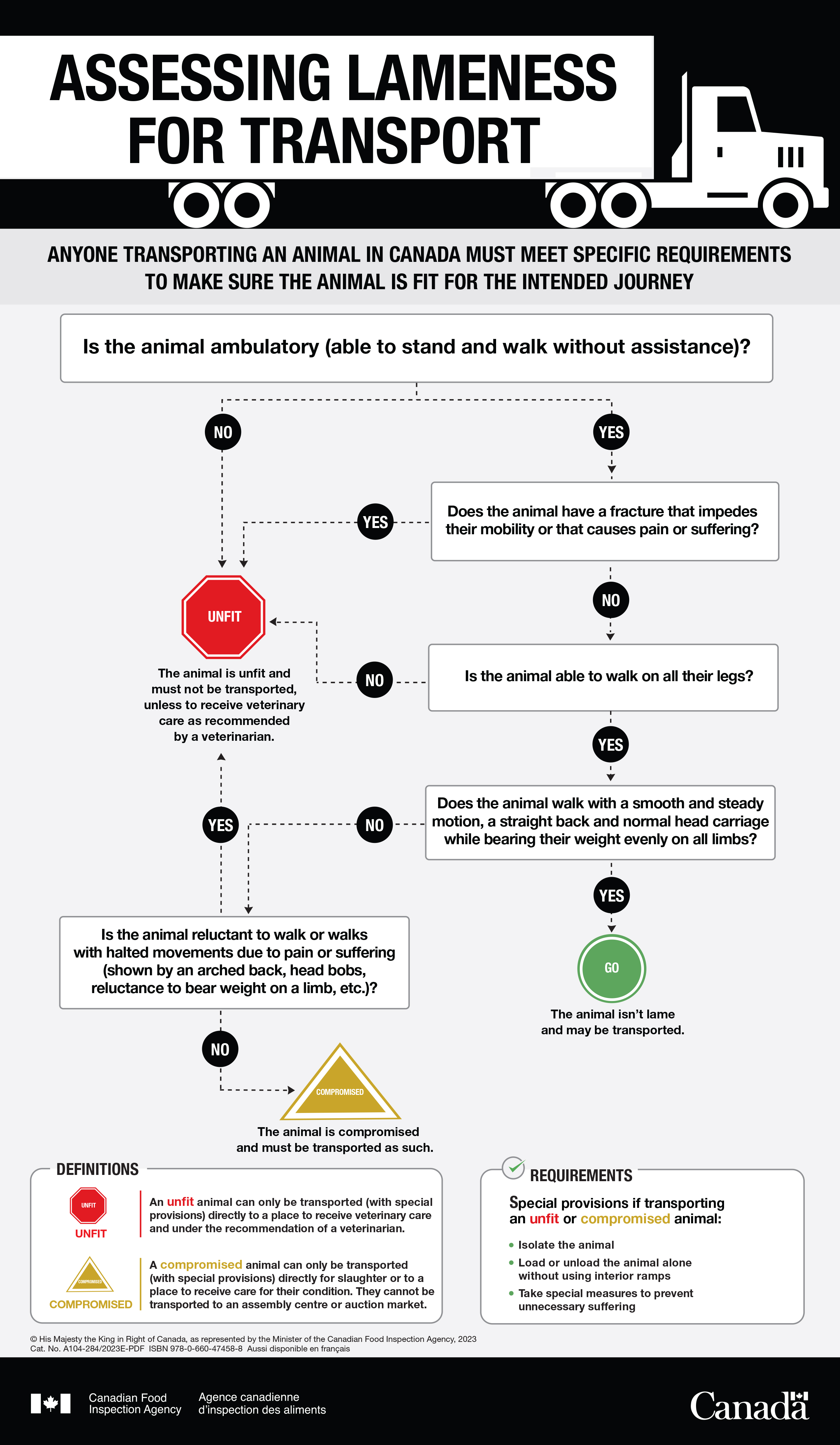
Assessing lameness for transport – Text version
Anyone transporting an animal in Canada must meet specific requirements to make sure the animal is fit for the intended journey.
Question 1: Is the animal ambulatory (able to stand and walk without assistance)?
- If no, the animal is unfit and must not be transported, unless to receive veterinary care as recommended by a veterinarian
- If yes, move on to question 2
Question 2: Does the animal have a fracture that impedes their mobility or that causes pain or suffering?
- If no, move on to question 3
- If yes, the animal is unfit and must not be transported, unless to receive veterinary care as recommended by a veterinarian
Question 3: Is the animal able to walk on all their legs?
- If no, the animal is unfit and must not be transported, unless to receive veterinary care as recommended by a veterinarian
- If yes, move on to question 4
Question 4: Does the animal walk with a smooth and steady motion, a straight back and normal head carriage while bearing their weight evenly on all limbs?
- If no, move on to question 5
- If yes, the animal isn't lame and may be transported
Question 5: Is the animal reluctant to walk or walks with halted movements due to pain or suffering (shown by an arched back, head bobs, reluctance to bear weight on a limb, etc.)?
- If no, the animal is compromised and must be transported as such
- If yes, the animal is unfit and must not be transported, unless to receive veterinary care as recommended by a veterinarian
Definitions
An unfit animal can only be transported (with special provisions) directly to a place to receive veterinary care and under the recommendation of a veterinarian.
A compromised animal can only be transported (with special provisions) directly for slaughter or to a place to receive care for their condition. They cannot be transported to an assembly centre or auction market.
Requirements
Special provisions if transporting an unfit or compromised animal:
- isolate the animal
- load or unload the animal alone without using interior ramps
- take special measures to prevent unnecessary suffering
